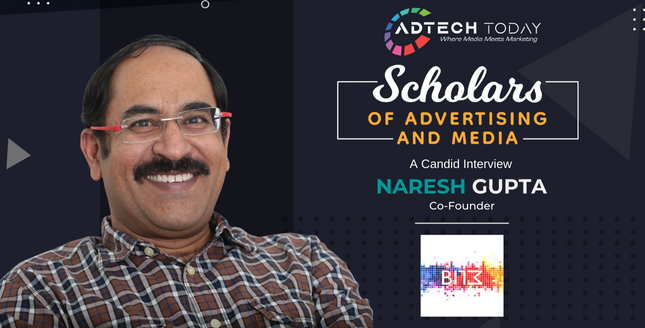
Naresh Gupta, Co-Founder of Bang in the Middle, has over 35 years of experience across India, the Subcontinent, and Asia Pacific. He has shaped strategies for categories ranging from liquor and tea to technology, apparel, and automobiles, winning awards like the Euro Effie for Incredible India and the Asian Effie for Samsung. Today, he leads strategic planning at Bang in the Middle while also writing columns for leading publications—an archeologist at heart who now digs differently.
We started with no business in hand, and the culture could not be defined in specific terms. As we started to acquire business, we started to define who we are and what values we stand for. We are driven by independence, integrity and trust in each other. We make every person in the team wanted and valued.
When we started, we wanted to break away from the shackles of networks that gave us no freedom and were extremely regimented. We felt that what works for network agencies may not work for the new emerging India that is now seeing a whole new bunch of brands coming in.
In every category or brand I have worked in, the idea has always been to be relatable to the consumers. Though in this, political consulting work has been the toughest, with data becoming the source of everyday work. Even then, in 2003, we had an idea where we asked the voters to write what they wanted from a political party, and we got a massive number of postcards, which became the basis of the manifesto. You must remember that it was a very different time when WhatsApp was not there, and even SMS was charged. This was a breakthrough in thinking through a political campaign.
The whole short-form content space is fast evolving, and no one has a clue where or what it will evolve into. But what is clear is that brands cannot surrender their tonality to quick-win needs. We do see a lot of brands not following this, which is making memorability extremely difficult. Brands are now witnessing a flat line in responses and an increased cost of response. That is the hurdle that needs creativity as a weapon to overcome.
In most markets, brands do not have to deal with diversity as brands have to deal with in India. But even with some amount of uniformity, the expectations from brands differ from market to market. What consumers desire from food, fashion, mobility, connectivity, and travel are all different, and brands cannot have one singular execution strategy.
I expect agencies to put consumers back at the center of their work. For some time now, brands have made media and platforms central to how they approach markets. There are too many platform and format experts, but this sameness is making brands undistinguished and
undifferentiated. Agencies will need to break out of this and create persuasion strategies that are platform-agnostic.